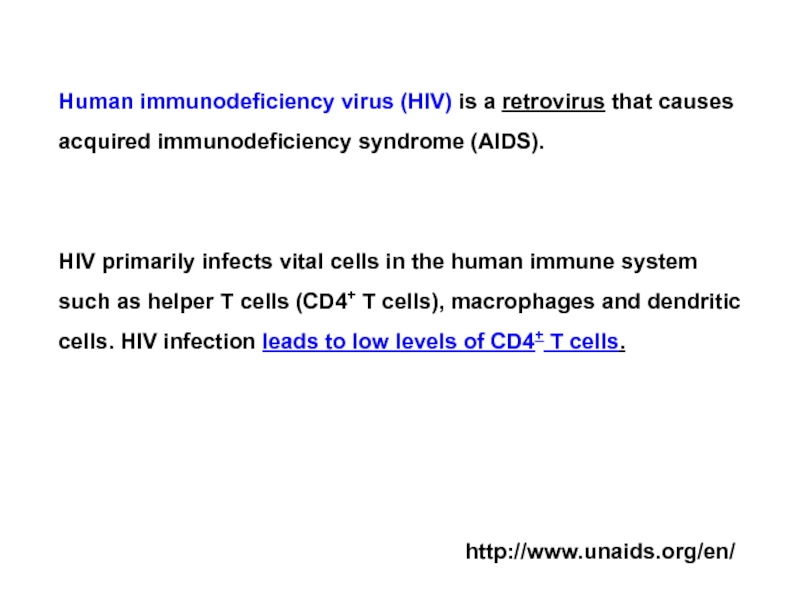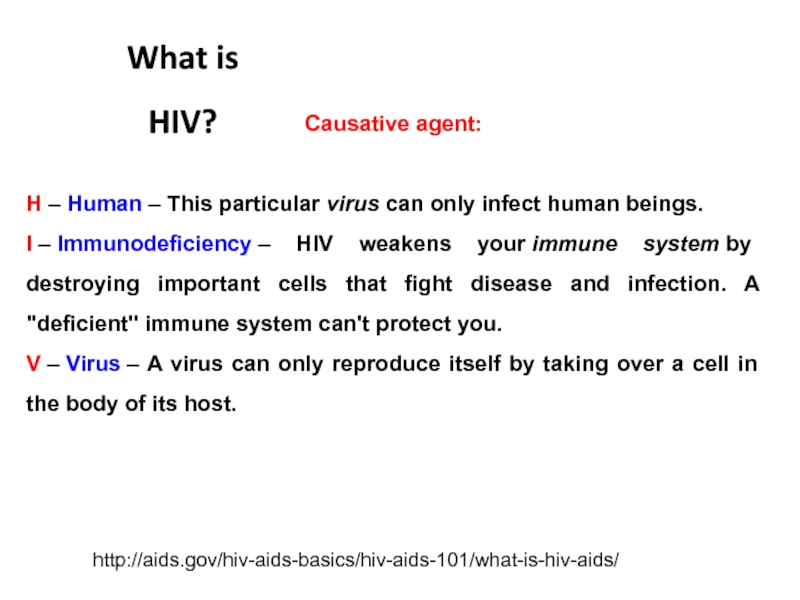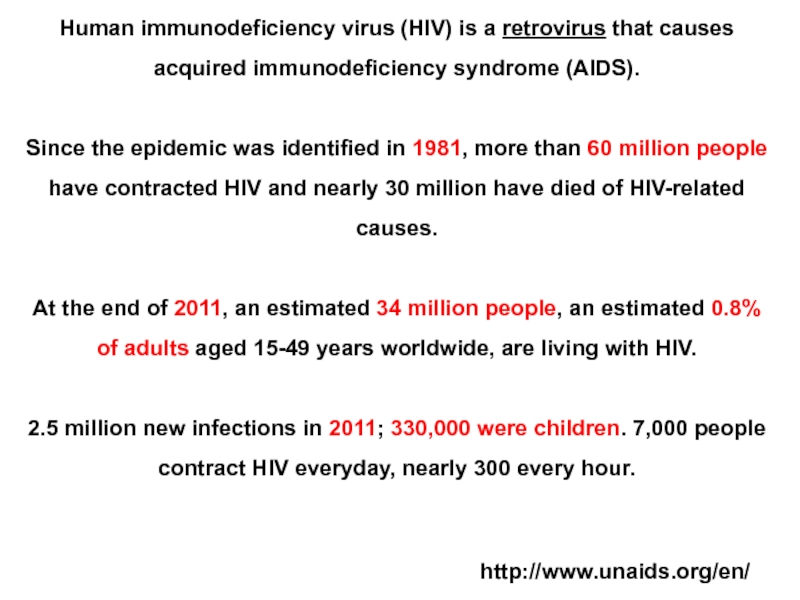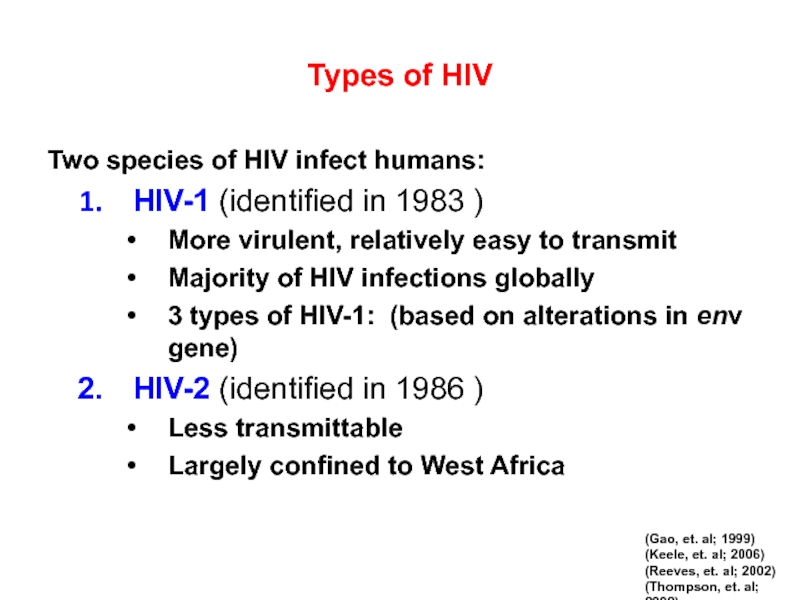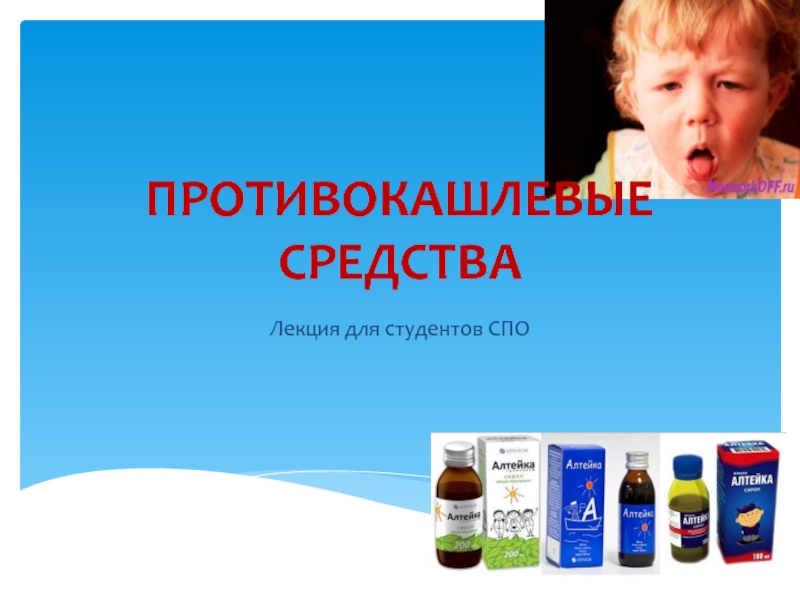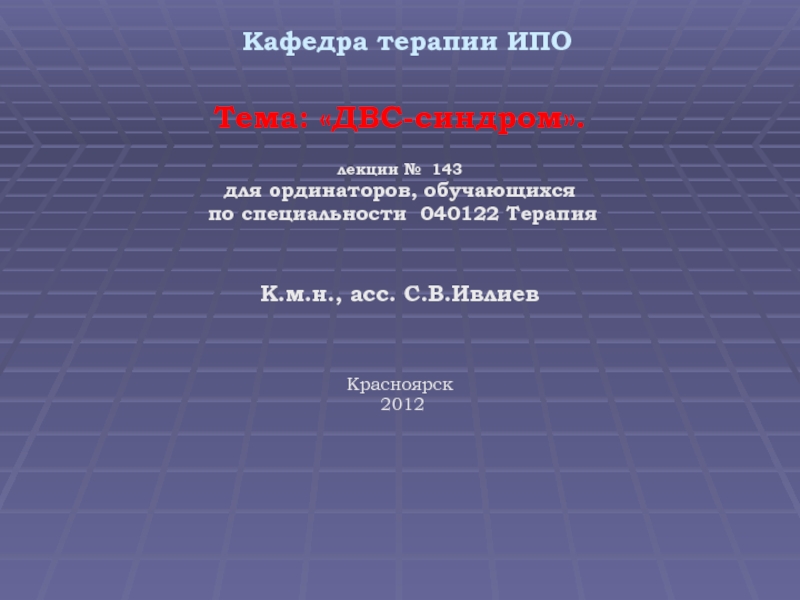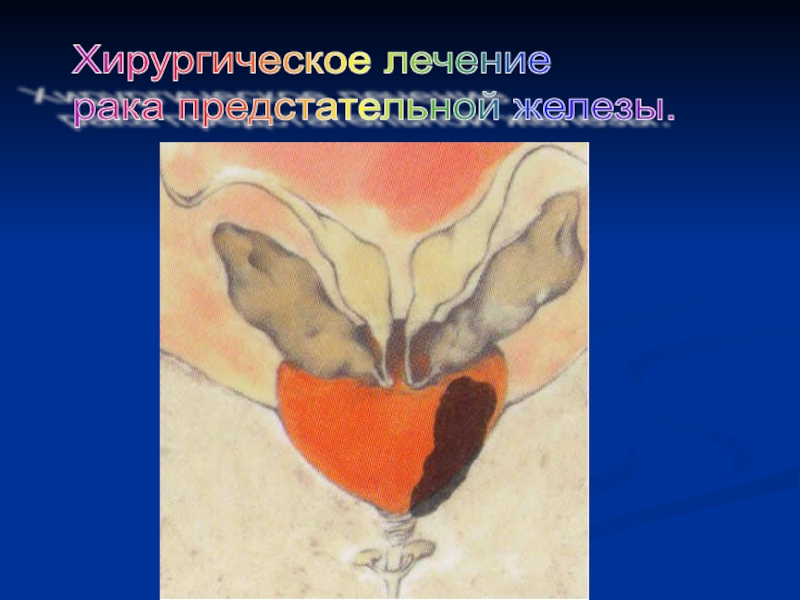- Главная
- Разное
- Дизайн
- Бизнес и предпринимательство
- Аналитика
- Образование
- Развлечения
- Красота и здоровье
- Финансы
- Государство
- Путешествия
- Спорт
- Недвижимость
- Армия
- Графика
- Культурология
- Еда и кулинария
- Лингвистика
- Английский язык
- Астрономия
- Алгебра
- Биология
- География
- Детские презентации
- Информатика
- История
- Литература
- Маркетинг
- Математика
- Медицина
- Менеджмент
- Музыка
- МХК
- Немецкий язык
- ОБЖ
- Обществознание
- Окружающий мир
- Педагогика
- Русский язык
- Технология
- Физика
- Философия
- Химия
- Шаблоны, картинки для презентаций
- Экология
- Экономика
- Юриспруденция
HIV-infection and AIDS презентация
Содержание
- 1. HIV-infection and AIDS
- 2. http://www.ck12.org/concept/HIV/
- 3. ВІЛ - вірус імунодефіциту людини HIV
- 4. Human immunodeficiency virus (HIV) is a
- 5. Causative agent: H – Human – This particular virus can only
- 6. http://aids.gov/hiv-aids-basics/hiv-aids-101/what-is-hiv-aids/ Disease: A – Acquired – AIDS is not
- 7. СНІД НАБУВАЄ МАСШТАБІВ ПАНДЕМІЇ
- 8. Human immunodeficiency virus (HIV) is a retrovirus
- 9. In 2011 alone, AIDS claimed an
- 12. HIV is responsible for a catastrophic pandemic:
- 13. http://aids.gov
- 14. http://aidsvu.org/map/
- 15. http://aidsvu.org/map/
- 17. On http://aids.gov/hiv-aids-basics/hiv-aids-101/aids-timeline/ A new disease…
- 18. History of HIV HIV
- 19. On http://aids.gov/hiv-aids-basics/hiv-aids-101/aids-timeline/ By the end of 1981,
- 20. ВІЛ-інфекція – не вирок
- 21. HIV is a virus that infects and destroys cells of the immune system (CD4+ cells).
- 22. HIV is a virus that infects and
- 23. Course of HIV Infection
- 24. Стадії СНІДу - латентна інфекція
- 25. Ретровіруси - РНК-вмісні пухлинні
- 26. Родина ретровірусів поділяється на 7 родів.
- 28. Рід Lentivirus
- 29. Африканська зелена мартишка –
- 31. Types of HIV Two species of HIV
- 32. Різновиди ВІЛ: ВІЛ-1 – відкрито у 1983
- 33. Особливості вірусу ВІЛ infects CD4+-lymphocytes (T-helpers
- 34. Основні мішені ВІЛ - лейкоцити Т4-лімфоцити
Слайд 3
ВІЛ - вірус імунодефіциту людини
HIV – human immunodeficiency virus
СНІД – синдром
AIDS – acquired immunodeficiency syndrome
Слайд 4
Human immunodeficiency virus (HIV) is a retrovirus that causes acquired immunodeficiency
HIV primarily infects vital cells in the human immune system such as helper T cells (CD4+ T cells), macrophages and dendritic cells. HIV infection leads to low levels of CD4+ T cells.
http://www.unaids.org/en/
Слайд 5Causative agent:
H – Human – This particular virus can only infect human beings.
I – Immunodeficiency – HIV weakens your immune
V – Virus – A virus can only reproduce itself by taking over a cell in the body of its host.
http://aids.gov/hiv-aids-basics/hiv-aids-101/what-is-hiv-aids/
What is HIV?
Слайд 6http://aids.gov/hiv-aids-basics/hiv-aids-101/what-is-hiv-aids/
Disease:
A – Acquired – AIDS is not something you inherit from your parents. You acquire AIDS
I – Immuno – Your body's immune system includes all the organs and cells that work to fight off infection or disease.
D – Deficiency – You get AIDS when your immune system is "deficient,"
or isn't working the way it should.
S – Syndrome – A syndrome is a collection of symptoms and signs of disease. AIDS is a syndrome, rather than a single disease. It is a complex illness with a wide range of symptoms.
Слайд 8Human immunodeficiency virus (HIV) is a retrovirus that causes acquired immunodeficiency
Since the epidemic was identified in 1981, more than 60 million people have contracted HIV and nearly 30 million have died of HIV-related causes.
At the end of 2011, an estimated 34 million people, an estimated 0.8% of adults aged 15-49 years worldwide, are living with HIV.
2.5 million new infections in 2011; 330,000 were children. 7,000 people contract HIV everyday, nearly 300 every hour.
http://www.unaids.org/en/
Слайд 9
In 2011 alone, AIDS claimed an estimated 1.7 million lives, of
HIV primarily infects vital cells in the human immune system such as helper T cells (CD4+ T cells), macrophages and dendritic cells. HIV infection leads to low levels of CD4+ T cells.
http://www.unaids.org/en/
Слайд 19On http://aids.gov/hiv-aids-basics/hiv-aids-101/aids-timeline/
By the end of 1981, there was a cumulative total
In 1983, Luc Montagnier and Françoise Barré-Sinoussi reported the discovery of a new virus (later called HIV) that is the cause of AIDS.
The first commercial blood test for HIV was licensed in 1985, allowing screening of the U.S. blood supply.
In 1987 the first anti-HIV drug (AZT) was approved by the U.S. Food and Drug Administration.
The first potent combination of anti-HIV drugs became available in 1995.
Слайд 22HIV is a virus that infects and destroys cells of the
Approximately 8-10 years
Initial infection
Asymptomatic period
(clinical latency)
AIDS
Often (not always) accompanied by severe flu like symptoms:
Opportunistic infections and cancer:
AIDS (acquired immunodeficiency syndrome) is the late-stage HIV disease. This occurs when immune system becomes so damaged that it cannot fight off diseases and certain types of cancer.
Слайд 24Стадії СНІДу
- латентна інфекція – від декількох місяців до
- синдром лімфоаденопатії – (СПНЛ – синдром пролонгованої немотивованої лімфоаденопатії або пре-СНІД), тривалість 1 – 2 роки (в окремих випадках до 7 років);
- клінічно виражений СНІД – з різноманітною картиною хвороби та ураженням різних органів і тканин (шкіра, лімфатична система, органи дихання, шлунково-кишковий тракт, нервова система та ін.).
Слайд 25
Ретровіруси - РНК-вмісні пухлинні віруси.
Мають фермент
У заражених ретровірусами клітинах синтезується провірусна ДНК, комплементарна віріонній РНК, яка інтегрує у клітинний геном.
Слайд 26Родина ретровірусів поділяється на 7 родів.
Рід Lentivirinae (“повільні” віруси):
- збудники повільних
- Т-лімфотропні віруси 1-го і 2-го типу;
- ВІЛ.
Слайд 29
Африканська зелена мартишка – головний резервуар вірусу імунодефіциту мавп
У популяціях зелених мавп звичайно є зараженим від 30 до 70 % особин. Хоча SIV не викликає хворобу у мартишок, він може бути причиною СІНДу в інших видів мавп.
Слайд 31Types of HIV
Two species of HIV infect humans:
HIV-1 (identified in 1983
More virulent, relatively easy to transmit
Majority of HIV infections globally
3 types of HIV-1: (based on alterations in env gene)
HIV-2 (identified in 1986 )
Less transmittable
Largely confined to West Africa
(Gao, et. al; 1999)
(Keele, et. al; 2006)
(Reeves, et. al; 2002)
(Thompson, et. al; 2002)
Слайд 32Різновиди ВІЛ:
ВІЛ-1 – відкрито у 1983 р., найбільш розповсюджений,
штами: M (major),
- ВІЛ-2 – відкрито у 1986 р., відрізняється за структурою геному, менш патогенний;
- ВІЛ-3 (підтип O ВІЛ-1) - відкрито у 1988 р., рідкий різновид, значно відрізняється за структурою геному;
- ВІЛ-4 - відкрито у 1986 р., рідкий різновид.
Слайд 33Особливості вірусу ВІЛ
infects CD4+-lymphocytes (T-helpers and macrophages) - має спорідненість
- kills T-helpers - вбиває Т-хелпери;
has additional genes, that are absent in other retroviruses, that leads to high speed of viral replication - генетичний аппарат ВІЛ має ряд додаткових генів, відсутніх в інших ретровірусів. Наслідок – у тисячу разів швидша транскрипція геному, ніж у клітинних генів. Швидкість розмноження ВІЛ величезна;
- extraordinary variability - надзвичайна мінливість, у 30–100 разів (за деякимим даними в мільйони разів) вища, ніж у вірусу грипу.



